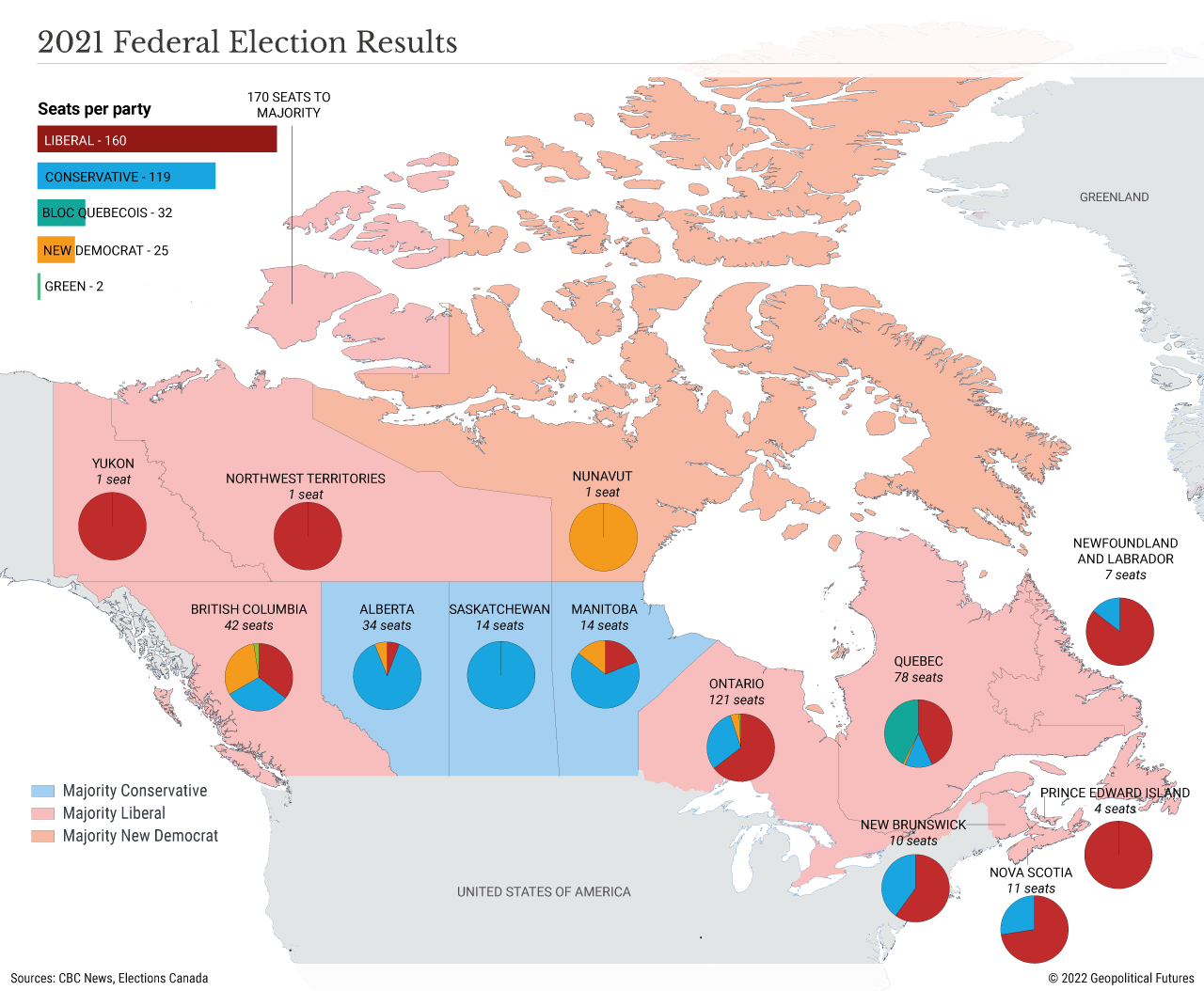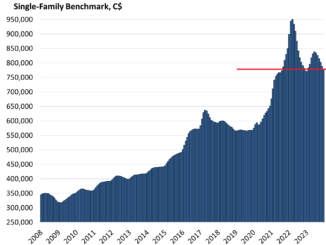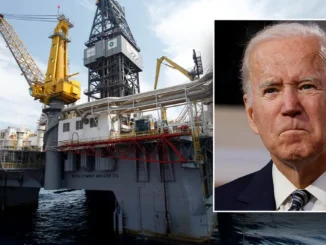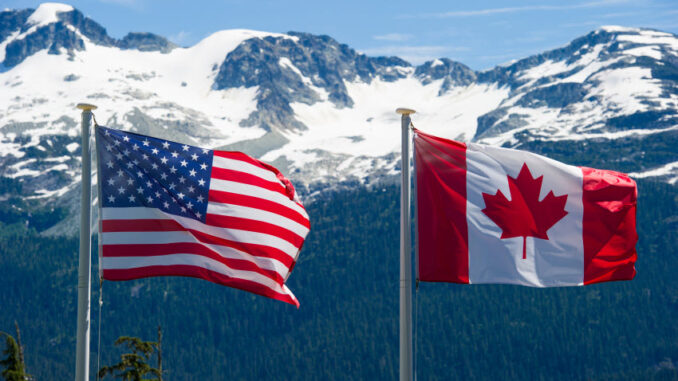
ENB Publishers Note: This is an outstanding article on the Canadian/U.S. energy relationship from Geopolitical Futures. If you are not subscribed to their site, you’re missing out. geopoliticalfutures.com
There are no guarantees in geopolitics, but stability in the U.S.-Canadian relationship certainly comes close. However, a recent ruling by a panel under the U.S.-Mexico-Canada Agreement regarding Canada’s dairy management system is a reminder that no international relationship should be taken for granted.
In the wake of the economic devastation brought on by the pandemic, both governments are working tirelessly to reconstruct their economies and counteract growing domestic polarization. Though inwardly focused, these important efforts directly affect the bilateral relationship. In the U.S., policy is trending in a direction that has spillover effects on Canadian provinces where Ottawa has a high degree of sensitivity. This is a serious challenge for Canada, whose needs to preserve both the confederation and economic ties with the U.S. are not easily compatible.
We Used to Be Friends
U.S.-Canadian relations aren’t seamless, but as international relationships go, theirs is one of the most steady and intimate. They’re closely aligned on democratic governance, trade and investment, and security cooperation, both along their shared border and in overseas operations. There were signs of trouble before 2020, but the pandemic altered both sides’ immediate priorities and room for maneuver.
Ottawa is now embroiled in disputes with Washington that touch on strategic and politically sensitive industries: energy, automobiles, dairy and softwood lumber. Canadian energy projects with the U.S. have suffered multiple blows, prompting the affected Canadian provinces to demand a tough response from Ottawa. The first occurred early last year, when U.S. President Joe Biden canceled permits for the U.S. component of the Keystone XL pipeline, which was vital for Alberta’s economy. Months later, Michigan revoked the easement that allowed Line 5 of the Enbridge pipeline to pass through U.S. territory, citing environmental concerns. This portion of the pipeline connects Alberta’s energy supplies in the west with Ontario and Quebec, providing those eastern provinces with nearly half their fuel supplies. Negotiations and lawsuits regarding the move are ongoing. Quebec was dealt another blow late last year after residents in Maine voted to cancel construction of an electricity transmission line, part of Hydro-Quebec’s New England Clean Energy Connect project, that would have linked Quebec and the New England area. The company is seeking an injunction against the decision, and it needs two-thirds support in the Maine legislature to move forward with the project.

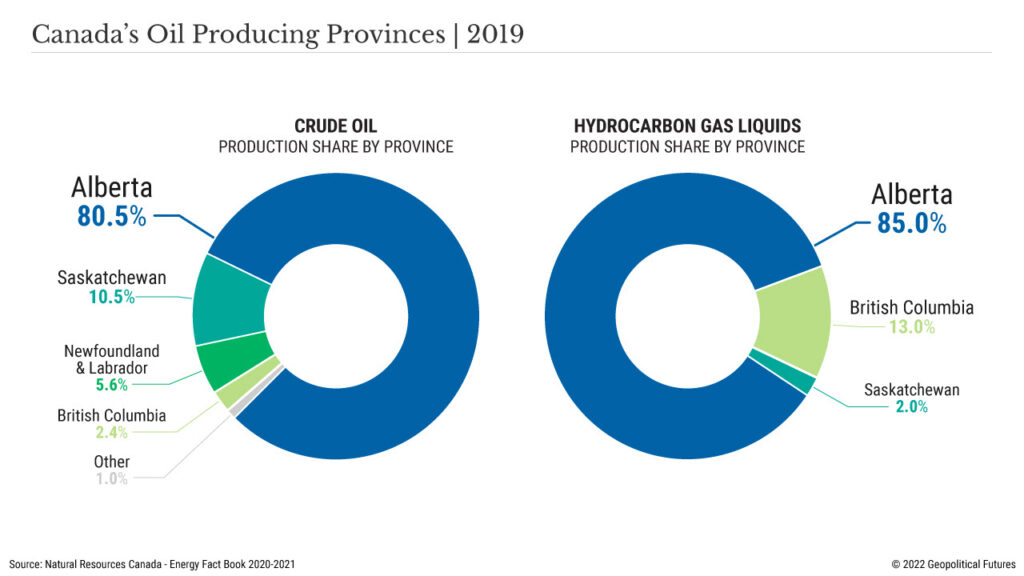
Similarly, new U.S. proposals for pandemic recovery threaten the North American automotive industry’s integrated cross-border production lines. North America’s car industry nosedived in 2020 due to social distancing measures, and the collapse has continued into the present because of microchip shortages. The White House’s proposed Build Back Better social spending bill calls for increased tax credits (to $12,500 from $7,500) for U.S. consumers who purchase electric vehicles. The problem for Canada stems from the strict criteria that need to be met to receive the full credit. To qualify for the full sum, the vehicle must be assembled domestically. Canada’s automotive industry is upset about the potential impact not only on sales but also on future investment, saying the new criteria would bleed investment away from Canada and into the United States. If passed, the measure would most affect the province of Ontario, which produces nearly all of Canada’s lightweight vehicles.
Finally, there are U.S.-Canadian trade disputes surrounding dairy and softwood lumber. Canada’s dairy industry is well-protected. Ottawa uses a supply management system that regulates production and supports farmers with federal funds. U.S. dairy farmers frequently take issue with the system, saying it shuts them out of Canadian markets. The updated U.S.-Mexico-Canada trade agreement increased access for U.S. dairy products in Canada and eliminated a Canadian program that allowed low-priced dairy ingredients to undersell U.S. dairy products in Canada and third-country markets. These changes, however, did not dismantle Canada’s supply management system. Last week, a USMCA arbitration panel concluded that the system breached the terms of the USMCA. Ottawa and Washington have until Feb. 3 to resolve the dispute. The outcome will greatly affect Quebec and Ontario, which provide about two-thirds of Canada’s dairy goods. Further complicating matters, supply chain issues have disrupted dairy markets, which are already facing inflationary pressure from higher fuel and grain costs.
It’s not a coincidence that a day after the USMCA panel’s verdict on the dairy dispute, Canada’s international trade minister announced a challenge to American duties on Canadian softwood lumber, also under the USMCA. In November, the U.S. Commerce Department raised duties on Canadian softwood lumber. It specified rates ranging from 11.12 percent to 29.66 percent for four large companies. All other Canadian lumber producers saw duties nearly double to 17.9 percent. 2021 was a difficult year for Canada’s lumber industry, one of the country’s most important sectors, because of shortages followed by see-sawing prices; lumber prices fell by 70 percent from May to August. Fires, floods and logistical hiccups only exacerbated the volatility. British Columbia stands to lose the most, given its status as Canada’s leading exporter of softwood lumber. The U.S. is the top market for Canada’s lumber exports.
Polarizing Country
Two of Canada’s fundamental – and closely linked – imperatives are to maintain peace with the U.S. and keep the confederation together. Its economic ties with the U.S. are the foundation of the two countries’ peaceful coexistence. And Canada’s national unity rests on a foundation of redistribution between regions. One major tool Ottawa uses to keep the provinces together is its equalization program, which sends money to less wealthy regions to guarantee access to “reasonably comparable” public services across the country. Unsurprisingly, the program is less popular in wealthier provinces that pay into a system where they see few benefits.
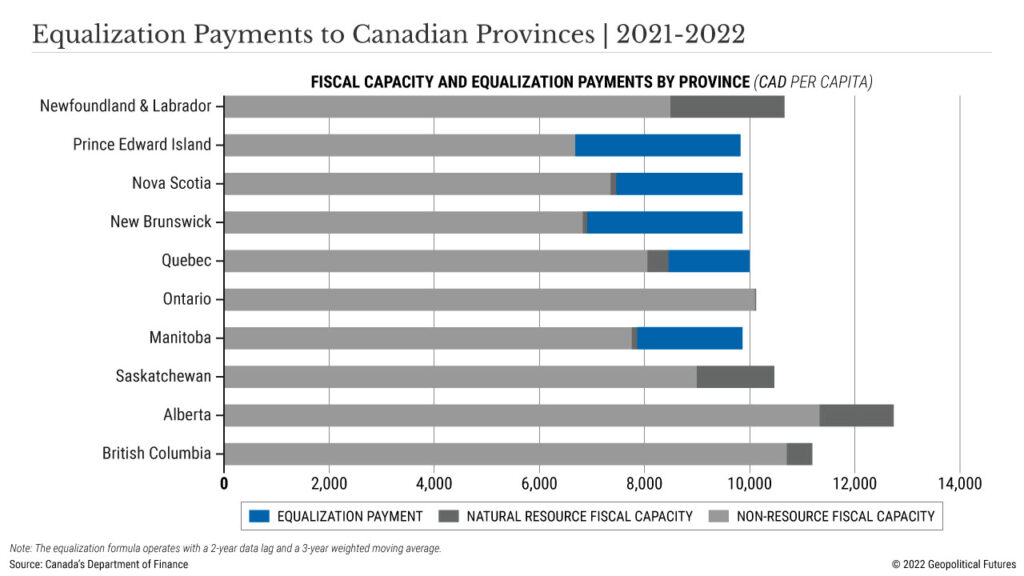
In recent years, however, provinces with previously high fiscal capacity, like Alberta, experienced economic downturns. This narrowed the gap between net recipients and net contributors in the equalization program. Despite the shift, the weight given to past versus present conditions in the equalization calculations means that Alberta lost approximately 2.9 billion Canadian dollars ($2.3 billion). In conjunction with last year’s federal elections, Alberta held a non-binding referendum in which 62 percent of voters supported the removal of equalization measures from the national constitution. Of course, Alberta cannot make this change alone. However, in reference to Quebec’s 1997 secession drive, the Supreme Court of Canada said the federal government has a duty to negotiate with a province if a clear majority votes for a proposed amendment to the Constitution. It remains to be seen to what extent Alberta and the federal government intend to follow this precedent.
This adds a layer of complexity to Ottawa’s reaction to any U.S. policy that affects it or its sensitive regions. Much has been said and written about political polarization in the United States, but Canada is experiencing its own rifts between provinces, between rural and urban areas, and between east and west. Canada’s 2021 federal elections highlighted a deepening trend whereby the Conservative Party dominates prairie provinces, the Liberal Party performs strongly in the east and urban areas, and the regional Bloc Quebecois gains ground. This trend existed well before 2021, but the social and economic hardships related to the pandemic made it worse. Quebec is notorious for its independence referendums, and while that specific ambition has died down, the desire for greater autonomy is still strong. In the wake of the elections, Saskatchewan’s premier called for a “new deal” in Canada, starting with canceling the carbon tax, reforming the equalization program and launching a national plan to protect exports destined for foreign markets (i.e., pipelines). (The remarks echo sentiments expressed by Albertan lawmakers in 2020 when they raised the question of secession over the government’s failure to address concerns related to the national energy program and provincial economy.)
Pay Attention
For Washington, what’s happening up north isn’t just a sideshow. A peaceful relationship with a stable Canada is a prerequisite for America’s ability to project power beyond North America. The countries’ roadmap for security and defense cooperation emphasizes the need to modernize the joint North American Aerospace Defense Command, better known as NORAD. Modernization includes building capabilities to act in new locations, development of advanced technologies and the upgrading of equipment, particularly on the Canadian side. Justifying the use of public funds for defense modernization can be challenging under normal conditions, but it’s much worse amid economic dislocation and ongoing economic disputes with Washington.
The U.S. also recognizes Canada’s potential contributions to Arctic defense and supply chain security for critical rare earths. Canada has deposits of at least 13 minerals that the U.S. has identified as critical for defense and security. The U.S. doesn’t have these minerals in sufficient quantities, and relying on Canada for them is definitely preferable to seeking alternative suppliers like China.
For now, Canada is managing these competing imperatives through diplomacy. (It doesn’t hurt that the Build Back Better bill is stalled in the U.S. Congress.) Ottawa needs broad exemptions, particularly related to integrated supply chains and sensitive industries, to avoid further economic damage that could aggravate regional divides. In the past, Canada has managed to solve trade disputes with the U.S. through waivers and exemptions. But even if Ottawa gets its way, the fiscal disparities and polarization between regions aren’t going away.
The depth and necessity of strong bilateral ties for both sides mean the likelihood of intense disruption is low. The U.S. has long been Canada’s single most important bilateral partner. For the U.S., Canada has always been a very important ally, but not typically one that demanded much attention. In the interest of ensuring stability and positive relations with Ottawa, Washington is going to have to start devoting more attention and time to managing its relationship with its northern neighbor.
By Allison Fedirka – Geopolitical Futures.

